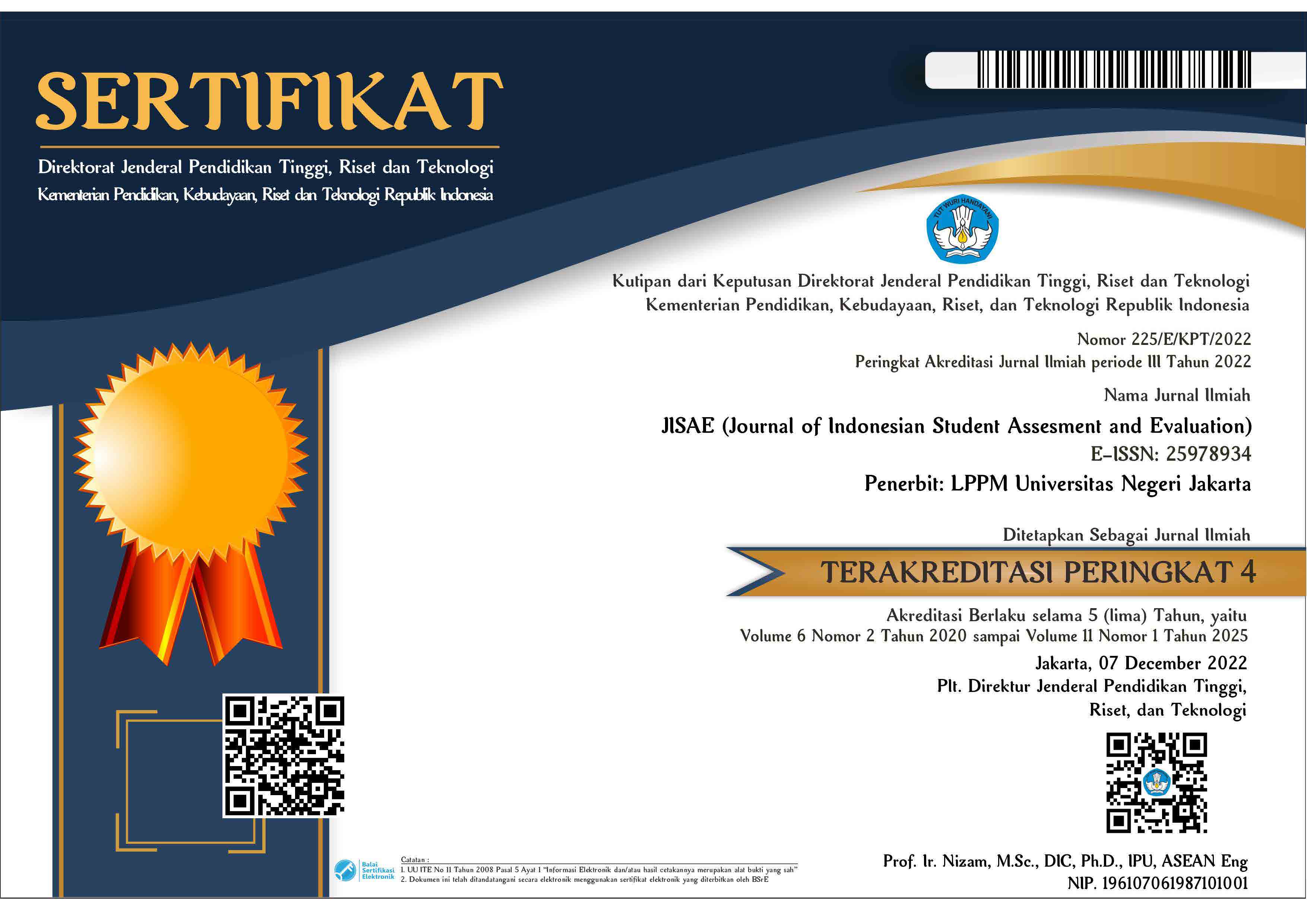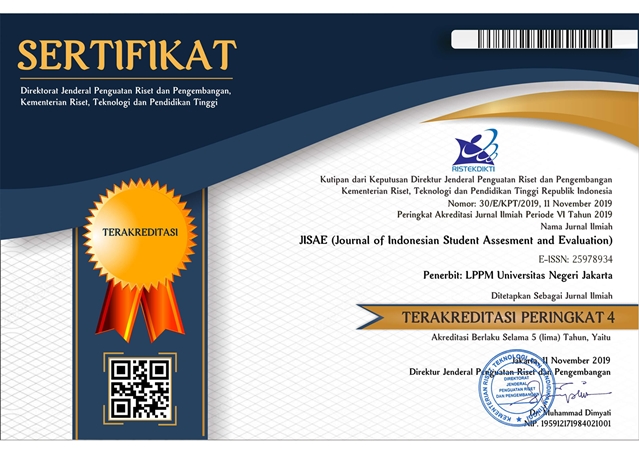Assessment Guidance of Wudhu at Elementary School Students A Study in Elementary school Pesanggrahan 10 Pesanggrahan Sub District South Jakarta
DOI:
https://doi.org/10.21009/jisae.v9i2.39932Keywords:
Assessment guidance, Wudhu, Elementary School Students, Validity, ReliabilityAbstract
This research is aimed to make an assessment guidance of a proper and objective wudhu ability of the student to be used by religious teachers in elementary school which use competency standard curriculum of religious study. The population are 392 students and the samples are 60 students by stratified random sampling. The instrument of this assessment guidance which is developed in assessment scale where the wudhu ability of the student by using rating scale from 0, 1 and 2 for each scale interval has a different description ability. Teachers’/assessors choose and give the proper rating scale with the wudhu ability performed by students.This assessment guidance has been analyzed the content and construction validity by seventeen experts. The result of the analysis shows this assessment instrument of the wudhu ability is valid for try-out need. Based on its validity by using a formula of product moment on the significant level, 1 % in the table r is 0.325. The result of all items of Rukun which are stated valid and all item of Sunnah which are stated valid. The conclusion is that the wudhu assessment guidance could be standardized as it has its condition and standard of a valid and good instrument building.










